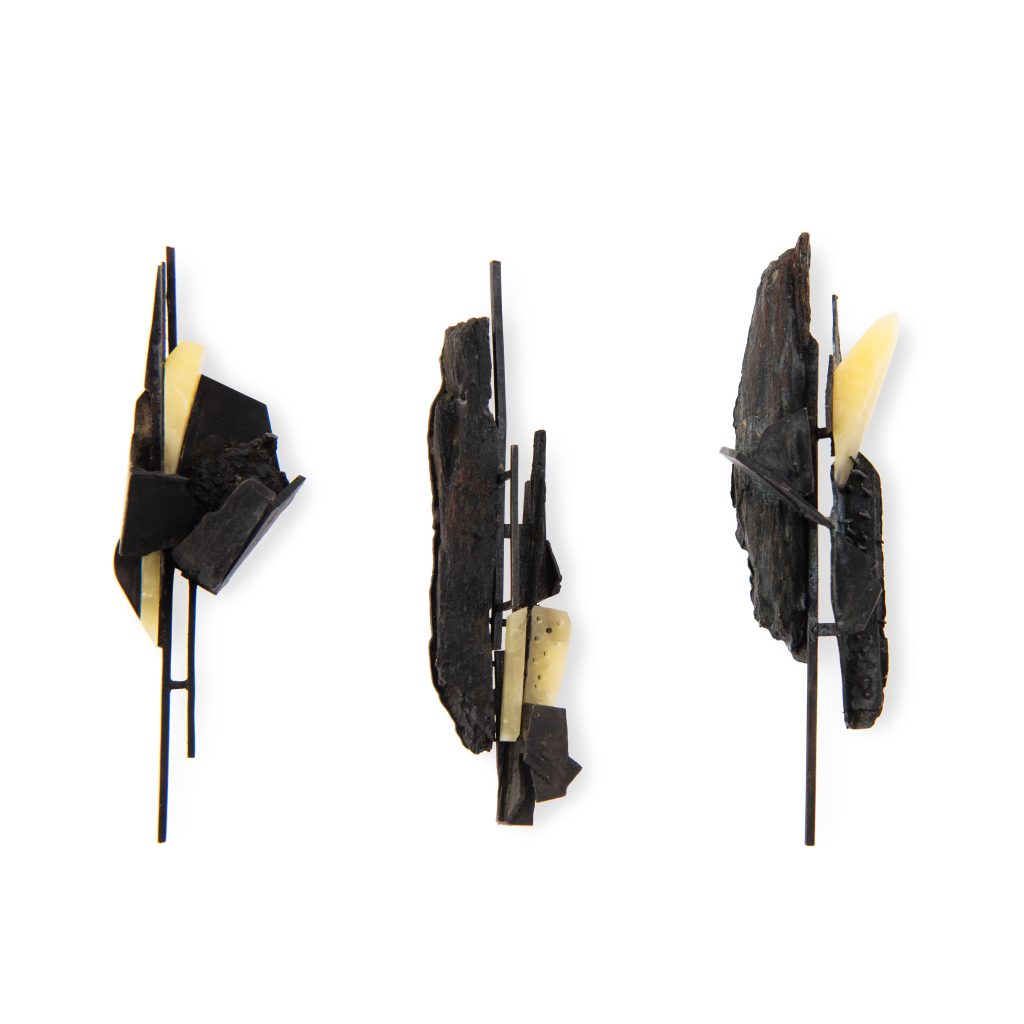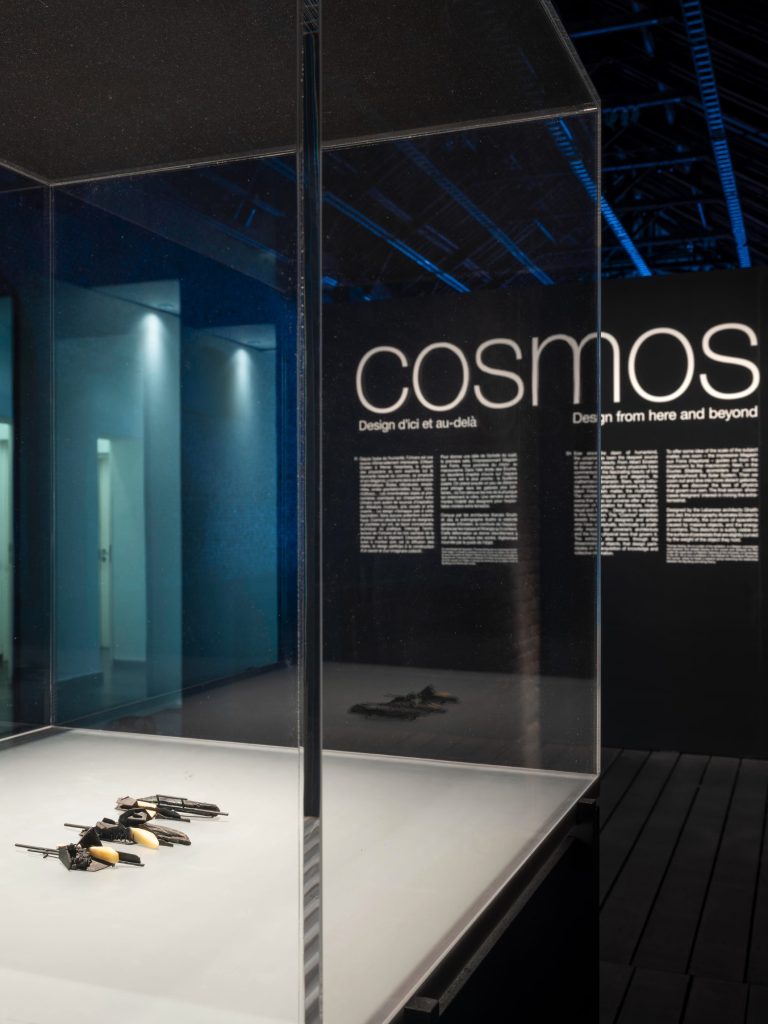- Home
- Exhibition
- Cosmos
Cosmos
Design from here and beyond | CID Grand Hornu
Marie Pok in collaboration with Thomas Hertog
Black holes, dark matter, spiral nebulae, exoplanets, gravitational waves, big bang, the multiverse… The countless objects and cosmic phenomena that shape our Universe offer as many sources of inspiration for literature, music, visual and live arts… Design is no exception to this same fascination.
Since the dawn of humankind, the Universe has been the deepest source of wonder. What is our place in this vast expanse of space, that took its origin some 13.8 billion light-years across? How did the cosmic evolution enfold? Are we alone? Why does the Universe exist at all?
This “Cosmos” exhibition reveals the work of designers who have conceptually, technically or poetically explored our Universe’s architecture and the hidden physical laws that govern it.From Albert Einstein’s general relativity to quantum theory, from gravity to the nature of space and time, from the micro to macro scales, our modern picture of the cosmos is brought to life through various design or architecture projects that take us well beyond these scientific roots, bearing witness to its mysteries and beauty.

Interview of Thomas Hertog
Thomas Hertog, an internationally renowned Belgian cosmologist, is also the co-curator of the exhibition Cosmos. Design from here and beyond. CID director and curator of the exhibition, Marie Pok, went to meet him at the faculty of theoretical physics at KU Leuven. From string theory to his approach to the anthropic principle, Thomas Hertog brilliantly and eloquently sweeps through the Universe. “The Big Bang is the beginning of time, the beginning of space… It is, perhaps, a boundary of a physical reality,” explains the former colleague of the famous Stephen Hawking, who shares the hypothesis that our universe is not unique but that there are in fact parallel universes that coexist. Thomas Hertog is a world-renowned scientist, and has been closely involved in the creation of our exhibition Cosmos. Design from here and beyond. Keen to bring scientific research into a cultural space, he argues that the language of art is most definitely particularly appropriate for describing the elegance of the cosmos, a concept developed by many physicists, from Einstein to Hawking, via Heisenberg and Greene. The discussion focuses on the one hand on the freedom that creatives have to approach the cosmos, and on the other, on the intuition and creativity that scientists bring to the subject.
Le lointain et le microbiote
Dans la même halle se trouvent deux autres pièces : d’abord, une vidéo des années 70 faisant voyager viscéralement du micro au macro et vice versa, en partant de la peau au plus lointain de l’espace, faisant éprouver l’emboîtement vertigineux des modes d’existence et la coexistence abyssale des différentes temporalités. Où est le commencement ? Dans le micro ou le macro, maintenant ou il y a des millions et des millions d’années-lumière ? Voilà, grâce à une vidéo plutôt vintage, la dynamique du mystère avec lequel composer, jouer. Sans fin, humblement. Ensuite, le regard est invité à scruter l’image d’une sculpture bijou d‘Arnaud Sprimont. Trois broches, composées de bronze, maillechort, inox et ambre, qui matérialisent et représentent des quarks. Les font entrer dans des représentations ordinaires puisqu’il s’agit d’objets que l’on peut porter, pour dévorer un vêtement, se parer. Les quarks sont des particules elles-aussi invisibles à l’état isolé, seulement identifiables dans des assemblages de plusieurs autres particules. Leur nom provient de « Finnegans Wake » de James Joyce, ce qui signale déjà comment l’imagination circule, entre différentes disciplines, ici entre littérature et science. D’autre part, les objets créés par Sprimont sont baptisés « Microbiota ». Comme on sait, les microbiotes sont les communautés de micro-organismes (archées, virus, bactéries…) qu’hébergent d’autres organismes vivants – intestins, bronches, peau, bouche, vagin – qui leur sont indispensables pour vivre, avec lesquels ils forment écosystèmes. Le microbiote affirme qu’il n’y a pas de frontières étanches entre nous et le vivant, il y a interpénétration., complémentarité. Ces bijoux intrigants symbolisent ce qui noue nos vies au plus profond de l’invisible, les échanges de tensions entre micro-organismes, micro-particules, toutes une dynamique d’échanges et de parasitages bien pensés, aux sources de nos design d’existence. Il faut rester dans cette halle, recueilli, écouter, regarder, méditer, laisser (re)monter l’étonnement devant la vie.
Extract from the text published on 22 November 2021 by Pierre Hemptinne.
Writer, Director of cultural mediation at PointCulture | www.pointculture.be
